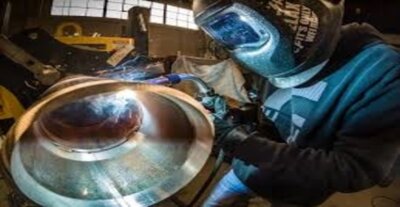
Ensuring Machine Readiness for Inspections: Strategies for Peak Performance
July 18, 2022
Harnessing Big Data and Advanced Analytics for Workplace Safety Excellence
July 18, 2022
Ensuring Machine Readiness for Inspections: Strategies for Peak Performance
July 18, 2022
Harnessing Big Data and Advanced Analytics for Workplace Safety Excellence
July 18, 2022In the industrial sector, machine safety is often seen as a mere compliance requirement. However, this limited perspective overlooks the substantial productivity gains and competitive advantages that safety measures can unlock. By embracing safety as a strategic tool, businesses can enhance operational efficiency, reduce costs, and ensure a secure workplace.
The Competitive Edge of Machine Safety
Streamlining Operations with Advanced Safety Features
Robust safety protocols and integrated software do more than ensure regulatory compliance—they drive productivity. Modern safety functions reduce machine downtime, allowing for quicker resumption of operations after safety checks. Instead of full system shutdowns, machines in a safe state can recover faster, ensuring continuity and maximizing uptime.

Cutting Waste and Optimizing Space
Advanced safety systems also prevent unnecessary material waste. Controlled shutdowns avoid sudden stoppages that often result in damaged or unusable materials. Additionally, motor-driven technology with integrated safety features reduces the physical footprint of machinery. This innovation frees up valuable floor space while maintaining peak efficiency.
Protecting Operators and Boosting Productivity
At its core, machine safety is about safeguarding operators. A well-designed safety system not only ensures their protection but also enhances their productivity. Operators who feel safe perform with greater confidence and efficiency, directly contributing to smoother operations and higher output.
The Future of Industrial Safety
Drive-Integrated Safety: A Game Changer
The shift from traditional hardware-heavy safety systems to drive-integrated solutions has revolutionized industrial operations. These systems reduce the need for lengthy downtimes during hazardous situations, keeping productivity losses to a minimum while maintaining safety standards.
Designing for Safety: Risk Assessment and Planning
Comprehensive risk assessments are critical to implementing effective safety measures. Identifying potential hazards and establishing clear trigger events for safety protocols ensures that solutions are customized to the specific needs of operations, achieving an optimal balance between safety and efficiency.
Smart Safety: Shaping Tomorrow’s Workplaces
Personalized Safety with Operator Data
The future lies in smart safety solutions. By leveraging data such as biometrics and skill levels, machinery can adapt to individual operators. This tailored approach enhances protection while fostering a responsive and efficient workplace.
Integrating cutting-edge safety technology goes beyond regulatory compliance—it’s an investment in operational excellence. By adopting innovative safety solutions, businesses can achieve safer, more efficient, and cost-effective operations.
For tailored industrial safety products and expert advice, trust EZSecur. Learn more at www.ezsecur.com.





